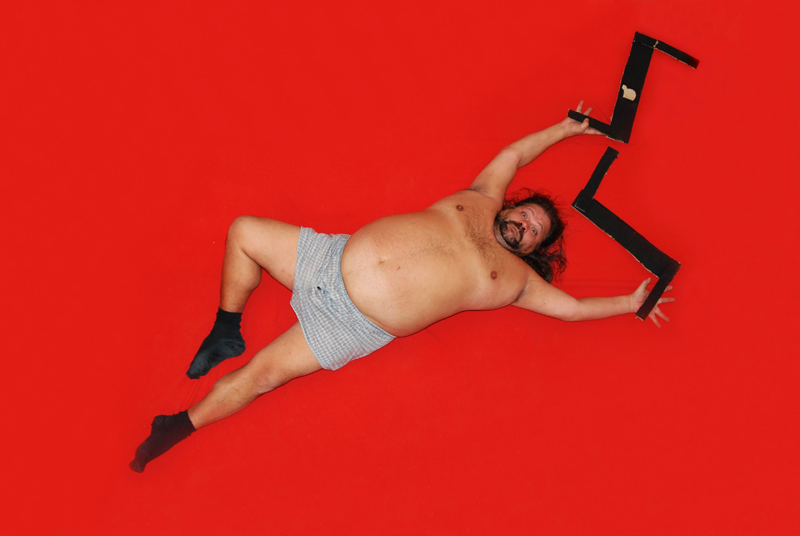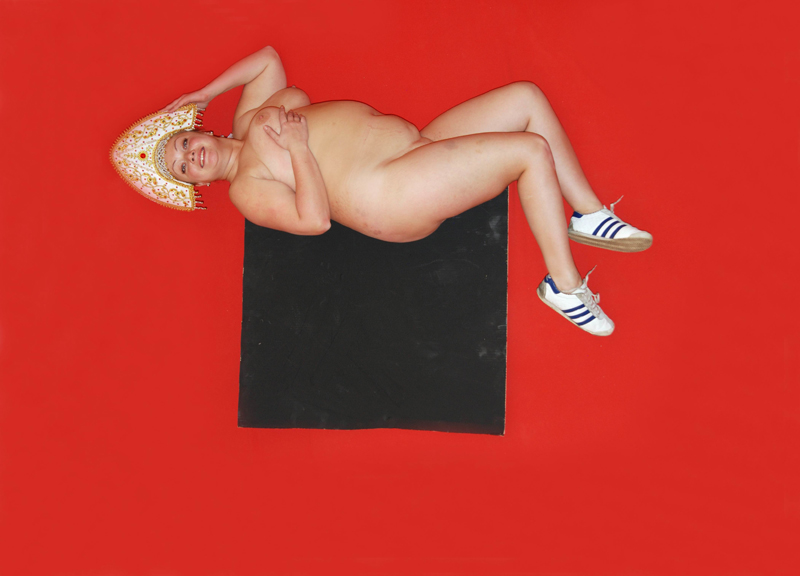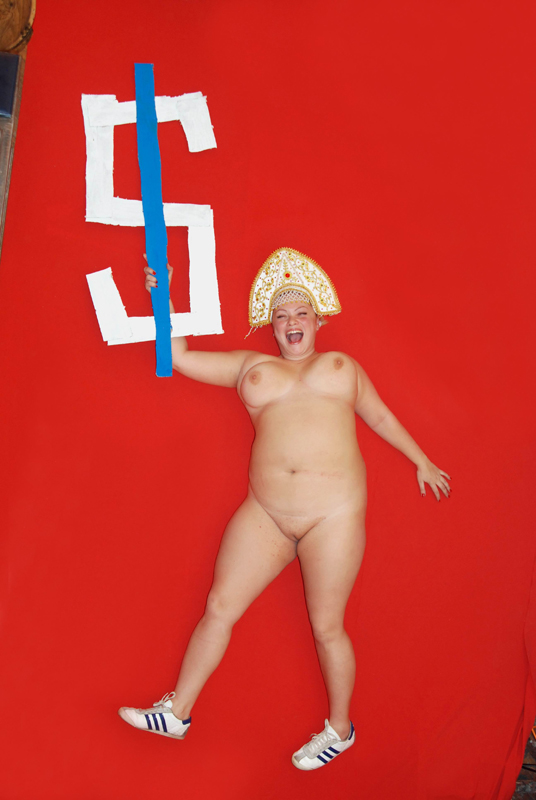Blue Noses at Guelman, Moscow (Exhib. Review)
Blue Noses (Viacheslav Mizin and Alexander Shaburov), Proletarian Conceptualism, Guelman Gallery, Moscow, December 22, 2009 – January 21, 2010.
Russian art provocateurs Blue Noses continue to trick the audience by a mixture of satire, humor, and provocation in the new series of photographic prints, Proletarian Conceptualism, at the Gelman gallery, Moscow.
The duo’s photograph of two kissing policemen (An Epoch of Clemency, 2004)
–banned by Russia’s culture minister from traveling to a scheduled show in Paris in 2007–pushed all the right buttons, revealing the hypocrisy of military morals and state censorship. In the new show, Blue Noses direct their humorous castigations against another establishment: the burgeoning Russian art market.
Twenty-four c-prints show the barely dressed artists–Alexander Shaburov and Viacheslav Mizin–posturing with two fat, naked women on bright red fabric that directly calls to mind the color of the Russian flag.
Posing individually or in groups, the photographs’ subjects wave the gaudy plastic banners shaped as a hammer and circle, a dollar sign, or the familiar five-point Russian star.
All the expected memorabilia are there: a propaganda portrait of Stalin stuck on the body of a doll is nursed by an obese blond who wears only a golden crown familiar from Russian folklore. In another image she tries to fit beneath a black carpet piece of cardboard, which reads as Malevich’s Black Square; but that famous bit of Soviet art is undercut by her naked buttocks which protrude.
In another photograph, one of the artists is upside down, holding a huge black star to cover his genitalia as he gazes back at the viewer. We are reminded that these recognizable symbols have been often used to cover both artistic ineptness, “nakedness” if you will, and a nostalgia for the past.
All of the photos are shot from a bird’s eye view. The figures, pinned like butterflies to a canvas, mimic a spectacle they condemn; that contemporary Russian artists must follow specific trends if they expect to prosper in today’s art market: everything may go, but nostalgia sells best.
From their beginnings in 1990s in Siberia, Blue Noses pushed elements of the current art scene to an extreme, all the while enjoying the attention that their absurd and hilarious actions provoke. Working in similar paths to Gilbert & George and the culture jamming Yes Men, the group takes themes from local culture that privilege brands and social conformity, seeking to tear them apart.
The prints of Proletarian Conceptualism debase art created for elite tastes with an in-your-face irony: Russian oligarchs/art collectors will want to own the art, but as they buy it up, they will have to face what they might not want to recognize. Adding controversial artwork to their collections, these artists hope to visually demonstrate the hypocritical tastes of Russia’s nouveau riche.








